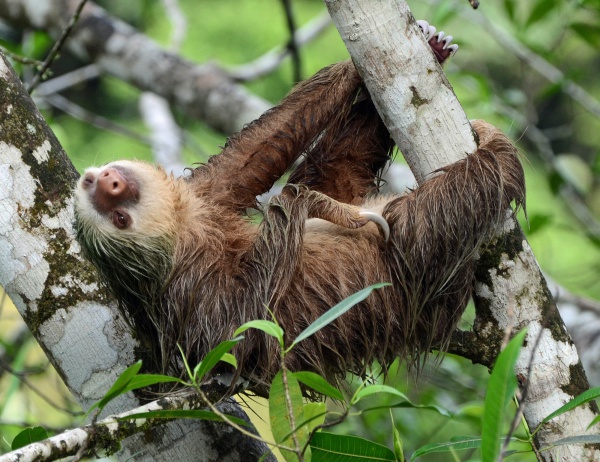Facts About Hoffmann's two-toed sloth
Hoffmann's two-toed sloth is a captivating, slow-moving creature native to the forests of Central and South America. These sloths are primarily nocturnal and spend almost all their time in trees. They possess a distinctive appearance with their shaggy fur and two toes on their front feet (and three on their hind feet). Adult sloths typically measure between 54 to 72 cm in length and weigh between 2.1 to 9 kg. Their claws are quite long as well, measuring about 5 to 6.5 cm.
Hoffmann's two-toed sloths inhabit tropical forests, from sea level up to 3,300 meters in elevation, residing predominantly in the rainforest canopies. They move extremely slowly and are usually solitary. Interestingly, females tend to be larger than males. Although their vision and hearing are not highly developed, they have an acute sense of touch and smell, which aids them in locating food.
These sloths exhibit some remarkable behaviors. They often hang upside down from tree branches using their robust claws and navigate through the trees at a very slow pace, mostly at night. Occasionally, they descend to the ground to urinate, defecate, mate, and give birth. Their slow movement and protective fur help them avoid predators such as jaguars, eagles, and snakes.
In terms of reproduction, Hoffmann's two-toed sloths engage in a courtship process, with females carrying their young for about 355 to 377 days before giving birth to a single offspring. The newborn sloths cling to their mother's belly immediately after birth. Sloths reach maturity between 2 to 4 years and can live up to 43 years in captivity. Their diet primarily consists of leaves, and they have a specialized digestive system to process the fibrous material.
Unfortunately, habitat destruction poses a significant threat to these sloths, although the exact population numbers are not known. They have some extraordinary adaptations to their environment, such as the ability to regulate body temperature (heterothermy), special fur that can host algae, and an unusual hair growth pattern. These traits help them blend into their surroundings, move slowly to conserve energy, and survive in their unique way.

 Costa Rica
Costa Rica